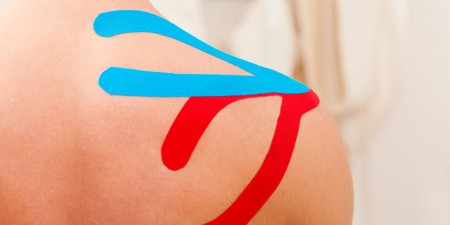Medical Taping

Medical taping, also known as kinesiology taping, is a therapeutic technique that involves applying a special elastic tape to the skin to provide support and stability to muscles and joints. Originally developed by Dr. Kenzo Kase in the 1970s, the tape is designed to mimic the elasticity of human skin, allowing for a wide range of motion.
The tape is believed to lift the skin, promoting better blood flow and lymphatic drainage, which can aid in reducing inflammation and speeding up the healing process. Additionally, medical taping is often used to alleviate pain, support injured or overused muscles, and improve overall athletic performance.
One of the key features of medical taping is its versatility. The tape can be applied in various patterns and tensions to achieve different therapeutic effects. It is commonly used in sports medicine, rehabilitation, and even in the management of certain chronic conditions.
While the evidence supporting the efficacy of medical taping is still evolving, many athletes and healthcare professionals attest to its benefits in enhancing proprioception, reducing pain, and facilitating a quicker return to activity. As with any therapeutic intervention, it is crucial for individuals to consult with healthcare professionals to determine the appropriate use and application of medical taping for their specific needs.
